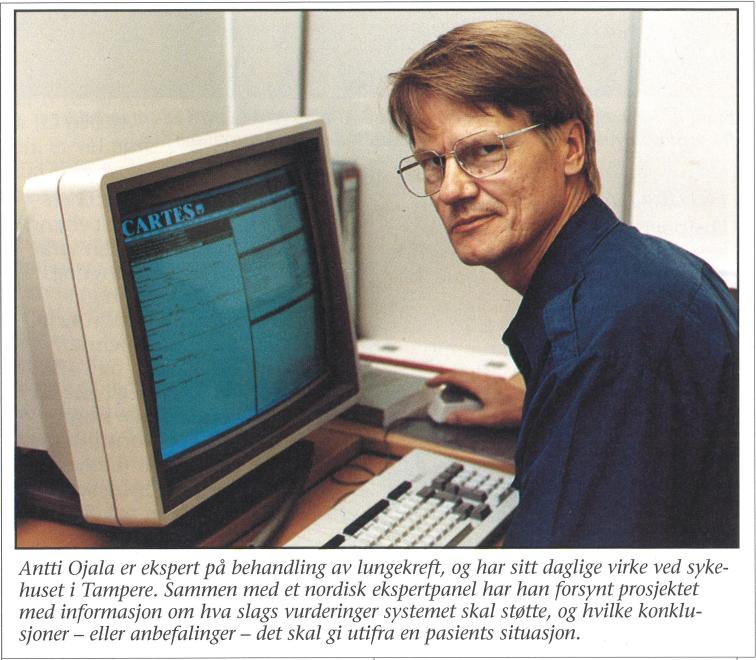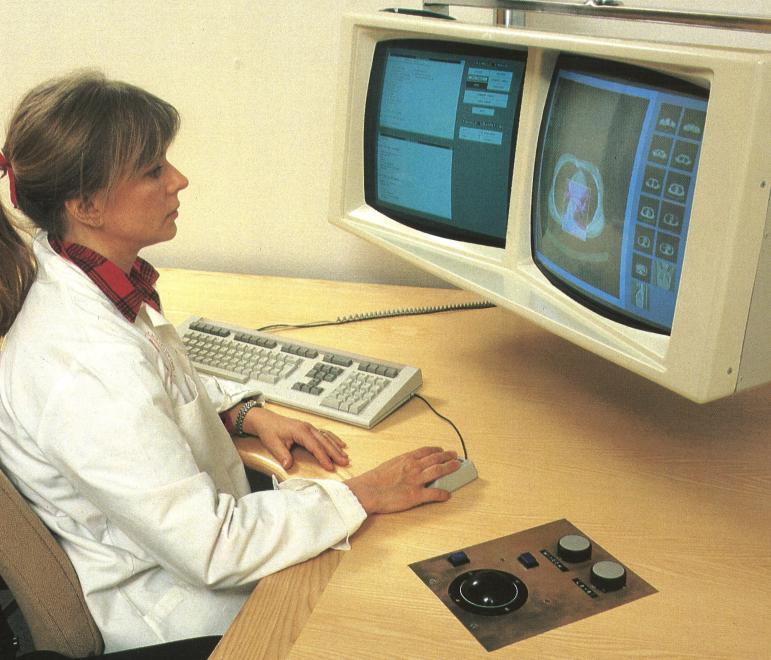Nordisk Industrifond (now Nordic Innovation) was responsible for following up the technological initiatives within various industrial niches, where the Nordic countries have competitive advantages internationally. This work laid the foundation for a vision of making the Nordic region the leading region in digitalisation, ethical AI and responsible use of data.
A technological competition
In the early 1980's, information technology was a hot topic among politicians in the industrialized countries. The world experienced a race within computer technology, where Japan was early on with large, strategic initiatives. The United States and the larger nations of Western Europe followed. Also in the Nordics, such strategies gained ground, exemplified by the Nordic action plan within computer technology (“Nordisk handlingsplan på datateknologiområdet”).
The five-year action plan received its financial start signal in 1985 and the heaviest part, financially speaking, was aimed at industrial development, which the Nordisk Industrifond was given responsibility for implementing. In total, Nordisk Industrifond initiated and financed a total of 41 projects during the five-year period, and the program budget was NOK 300 million.
The action plan within computer technology was a venture without parallel in the history of Nordic research policy. In addition to several brilliant research results – which, among other things, resulted in a number of business establishments and new products – the program paved the way for a new type of Nordic industrial research collaboration, which takes a project all the way from initiation to implementation. The method that was developed then is still the basis for Nordic innovation cooperation today.

SIL: Signals From the Earth's Interior
The action plan for computer technology in the Nordics was largely about initiating and investing in information technology that could contribute to a simpler, more efficient, and safer everyday life. One of the projects was the creation of new systems for earthquake registration in Iceland. The need to be able to monitor the activity underground on The Saga Island using computer technology was crucial to be able to warn about earthquakes more quickly.
Building such an extensive data acquisition system, partly based on new technology and new data acquisition methods and instruments, was a task that required Nordic cooperation. In 1986, eight researchers from the five Nordic countries launched the project “Seismisk datahandlingssystem för södra Islands lågland” (SIL). The automatic seismic system could detect and evaluate ground movements and used cutting-edge technology.
After several years of data acquisition and testing, the SIL system became Iceland's national seismic network in 1993. The network marked a difference internationally in the quality of earthquake detection and evaluation, and the number of seismic stations has increased in line with the degree of detection capability. Today, the SIL network is an important part of the technology system that warns Icelanders about earthquakes.
CART: Fighting Cancer With Data Technology
The enormous progress in computer technology that accelerated in the 1980's, particularly in imaging systems, opened new possibilities for the use of computer systems within the medical industry. Between 1985 and 1987, Nordisk Industrifond helped finance a program to develop computer systems for radiation treatment of cancer, and the project contributed to several important advances in the fight against cancer.
The Nordic research and development program CART (Computer Aided Radiotherapy) was supposed to improve data communication and develop computer systems towards the year 2000. The goal of the project was to improve the planning of radiation treatment, as well as to ensure that the implementation went as planned. By utilizing computer technology in the planning, the high radiation doses could be concentrated with greater safety and precision to the areas where the disease had spread, which consequently would reduce the side effects of radiotherapy.
The CART project, which involved twelve Nordic companies and more than 400 people, led to several commercial products, and received international attention. The companies that specialized in radiotherapy were relatively small and spread across the Nordic region. Thanks to the CART project, a unified Nordic specialist community could share new technology, system improvements and databases, which contributed to important developments in radiotherapy.

Mjølner: A Project With Ripple Effects
One of the projects initiated by Nordisk Industrifond was named "Mjølner". The project aimed to develop an integrated system of programming tools based on powerful workstations with graphic displays. The participants in the project came from industry and universities in Denmark, Sweden, and Norway. As a direct result of the project, the company Mjølner Informatics was established, and this is a good example of the large ripple effects a Nordic cooperation project can have.
Mjølner's computer engineering system has been used in Ericsson’s telephone exchanges around the world, and their software has been used in Danfoss’ motors. The Mjølner project also created a distinctive computer language OSDL (object oriented extension of SDL). SDL is an internationally standardized language for description and specification. This language is today known all over the world.
"It has been a fantastic development. I did not think that this project would lead to the formation of Mjølner Informatics. What we were dealing with at that time can almost resemble basic research. But when you also get representatives from the industry, good synergy effects can occur – and it did in this case"
CEO of Mjølner Informatics, Jørgen Lidskov Knudsen, 2003.
The Success of Nordic Tech
The development of computer technology was in its infancy in the 1980's, and the fact that the Nordic countries were early in facilitating technological cooperation between the countries has contributed to strengthening Nordic competitiveness in the market and making the region one of the most digitized in the world.
Today, Denmark is ranked as the world's most digitally competitive country, according to IMD. The rest of the Nordic countries are all placed in the top 15 list. The Nordic region forms an ecosystem that is attractive to companies and start-ups in tech and IT. Tech start-ups make up several of the Nordic region's 78 Unicorn companies, which is the highest number of unicorns per capita in the world outside of Silicon Valley.
The efforts of the Nordisk Industrifond's programs in the 1980's contributed to increase the level of competence and competitiveness in the Nordic IT industry. The fact that Nordic citizens and industries experienced an early application of technology, especially computer technology and the internet, has undoubtedly been a central factor for a number of Nordic success stories. This effort also cultivated a solid foundation for further development of Nordic digitization in the years that followed.

Facts
- In 1985, the Nordic Council of Ministers gave the financial start signal of a Nordic five-year action plan within computer technology (“Nordisk handlingsplan på datateknologiområdet”)
- At the time, the action plan was a venture without parallel in the history of Nordic research policy. Nordisk Industrifond was given responsibility for implementing the industrial part of the ambitious action plan
- Eight researchers from the five Nordic countries launched the project “Seismisk datahandlingssystem för södra Islands lågland” (SIL) in 1986. The automatic seismic system could detect and evaluate ground movements and used cutting-edge technology
- The Nordic research and development program CART (Computer Aided Radiotherapy), financed by Nordisk Industrifond between 1985 and 1987, developed computer systems for radiation treatment of cancer, and contributed to several important advances in the fight against cancer
- "Mjølner" was a project initiated by Nordisk Industrifond, which aimed to develop integrated systems of programming tools based on powerful workstations with graphic displays. As a direct result of the project, the company Mjølner Informatics was established, and the company's computer engineering systems have later been used in, for instance, Ericsson's telephone exchanges and Danfoss' motors
Background: 50 years and onwards
This article is produced as a part of Nordic Innovations 50 years anniversary. In 2023, we celebrate an era with Nordic collaboration and innovation by showcasing pieces of what we have co-created over the past 50 years.
